Today’s workout was hill sprints at Colbert Park. Did a few warmup sprints at 40% up to 80%, then 4 working sprints at 90–95%.
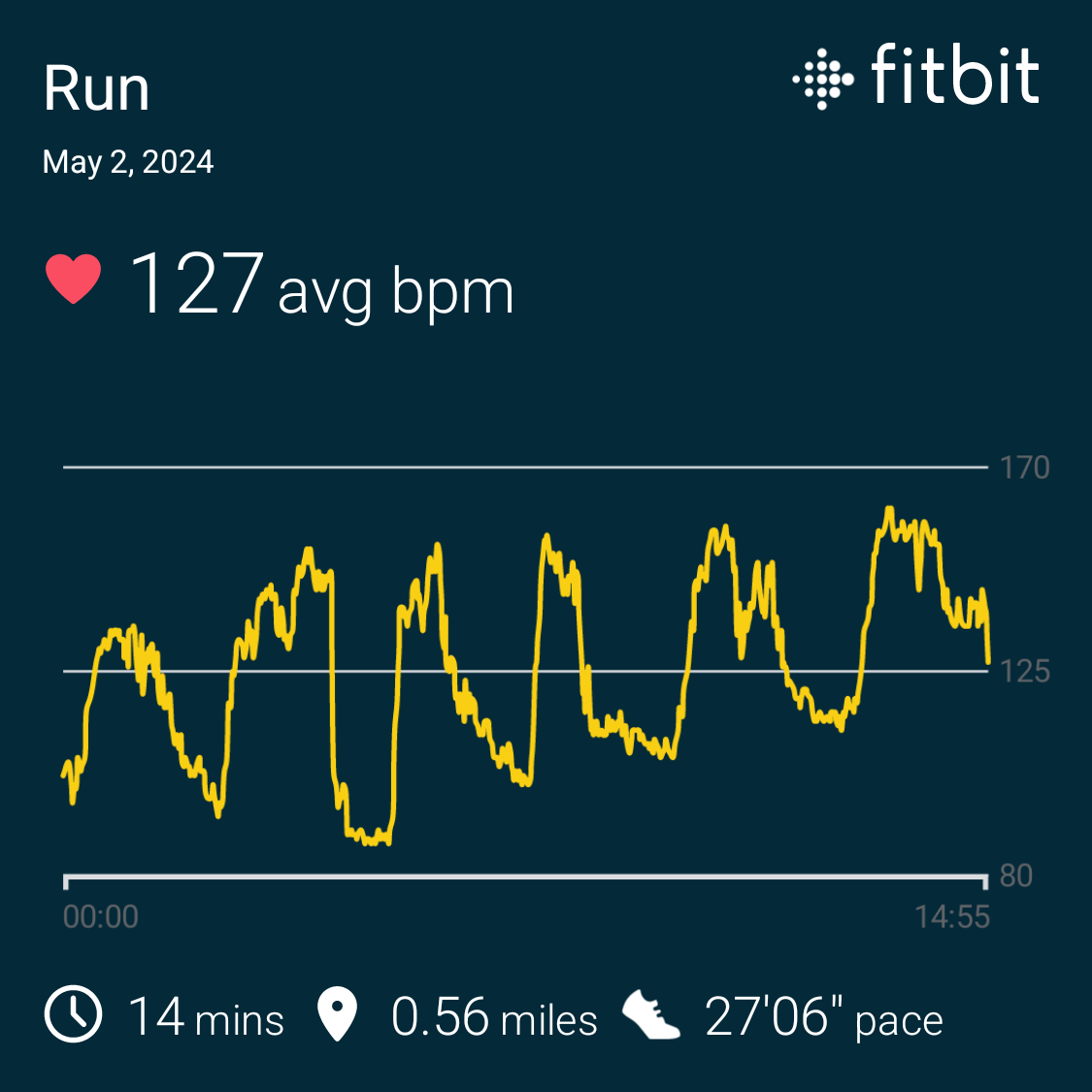


Today’s workout was hill sprints at Colbert Park. Did a few warmup sprints at 40% up to 80%, then 4 working sprints at 90–95%.


Based on the ideas that I talked about in Training for everything, here’s my latest cut at a personal exercise program. (My first cut was derailed by circumstances, and then I adopted a dog which derailed everything except dog walking. Then I got West Nile fever.) See my no-longer-particularly-recent Starting to rough up a new training plan for more information about the specific exercises and how I organize them into sets, reps, and progressions.
I have a set of exercises that I want to do, ideally twice a week each:
That’s five things, so if I did each twice, and gave everything its own day, I’d have to have a 10-day week. That isn’t impossible. In fact, I’ve seriously considered planning my workouts in a longer cycle than weekly in the past, it but is unhandy in various ways. Fortunately, I think I can double-up several of these exercises in a way that will let me fit them into 7-day week.
The 1-handed club swinging isn’t particularly intense cardiovascularly, so I’m thinking I can combine it with the clean & press. The KB swings is intense cardiovascularly, but because it’s very different, I’m thinking I can combine it with the gymnastic rings bodyweight circuit, doing the KB swings as a “finisher” after the rings workout.
My HEMA (sword fighting) practice is three times a week, and I can’t adjust that schedule, except by skipping workouts, so I have to work that in when it actually happens.
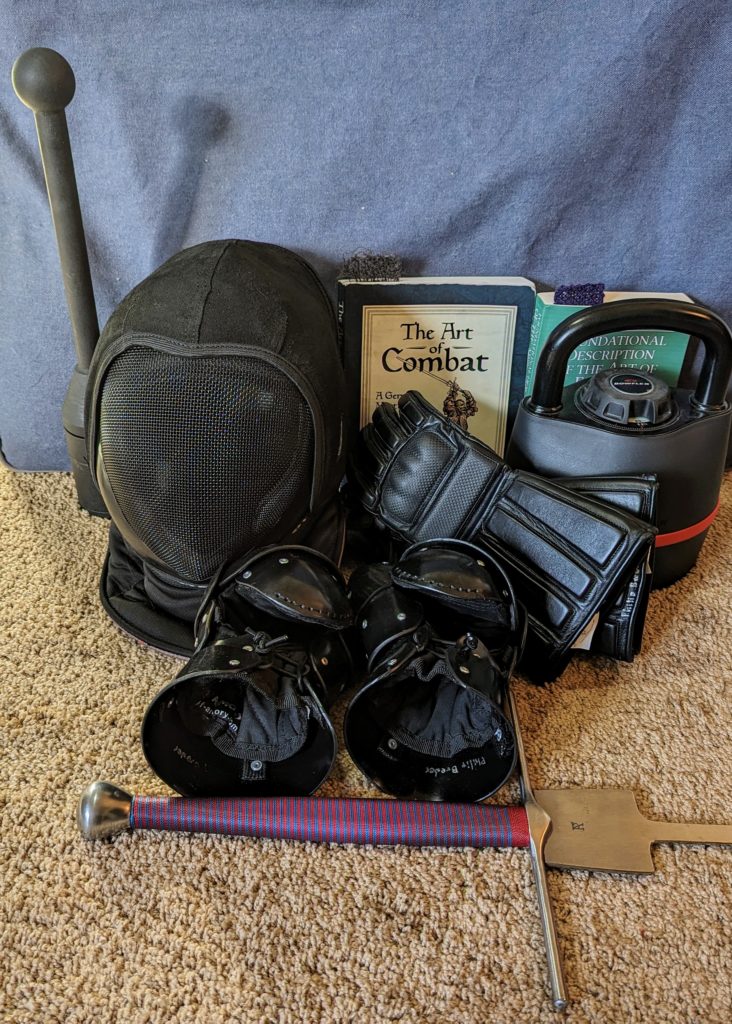
Of course I also want to get one day a week of complete rest. I’d normally make that Sunday, but there’s a HEMA practice session on Sunday so it’ll have to be on Saturday instead.
So here’s a quick stab at a possible weekly plan:
| Day | Morning | Midday | Evening |
|---|---|---|---|
| Sunday | Rings circuit / KB Swings | HEMA | |
| Monday | 1-H Heavy Club / KB C&P | ||
| Tuesday | Sprints | HEMA | |
| Wednesday | Rings circuit / KB Swings | ||
| Thursday | 1-H Heavy Club / KB C&P | HEMA | |
| Friday | Long run | ||
| Saturday | Rest |
I’ve omitted a “warm-up” block, because I already do my morning exercises, my ridiculously long warm-up routine, nearly every day. I’ve also omitted my dog walking, which averages something over 6 miles a day.
I’m pretty happy with this. It has my HEMA practice sessions in at the correct times; it leaves open the time slots where I have Esperanto, and meeting friends for lunch; it has a full rest day.
I don’t show it here, but I’ll definitely do a de-load week every 5 or 6 weeks.
I should be very clear that, at this point, this is entirely aspirational. I’ve been doing each of these workouts individually, but the only combined workouts I’ve tried so far are the heavy club swinging and the clean&press workouts. I’ve also been taking more than one rest day per week. But the progress I want seems to depend on doing something like this workout schedule, so I’m going to give it a try.
I’ll report back regarding my success or failure.

It’s a bit harder to put this past year in a tidy descriptive box than it has been the past few years. Probably the simplest description would be: The same, but less so.
Last year I did a great job of leaning into exercise as a way to cope with the pandemic. This year started with me feeling like I could imagine that the pandemic would end, and I was focusing of all the new things I could do, once I could spend time with other people—rock climbing, parkour, fencing, historical European martial arts (i.e. sword fighting), etc.
Except then the pandemic didn’t end, and I was left to carry on as best I could with last year’s exercises. I did okay, but not as well as I had done.
In fact, I’m perfectly pleased with the way I maintained my capabilities. Late last year I checked and documented that I’d pretty much accomplished the baseline goals that I’d set for myself (see Five years of parkour strength training). I just checked again, and I’ve not backslid on those.
Last year I didn’t even think about setting new baseline goals, because my plan had been to move on from these solo training goals to training with other actual people. This year I’ve felt like I needed to at least think about it, but so far I’m not feeling it. I do want to recover the ability to do a few pull ups (again!), but that’s about the only physical benchmark of that sort where I feel like I want or need specific improvement.
It’s not that I’m a perfect physical specimen; it’s just that I don’t have much attachment to being able to squat this much weight or deadlift that much. I want to be strong enough to pick up something heavy and carry it a reasonable distance, but I don’t feel much need to put specific numbers on that weight or that distance.
I wrote a day or two ago about how I gradually shifted to more running and less lifting, which has been great. But in the middle of the year I spent some months doing less of everything—I had a minor medical issue in the spring, then we took a vacation, then I went to visit my dad, then Jackie had her hip replacement (meaning that I had to pretty much take over running the household for a few weeks). I did okay in terms of not backsliding too much, but I didn’t make much forward progress, and it has only been in the last six weeks or so that I’m really getting back to doing what I want to do.
So, where to go from here? I guess I want to:
I’ll aim to do something just like that in January and February. Along about March or April I will want to do the Superhero workout that I couldn’t do last year—that’ll be a brief interruption in my shift back to more running and less lifting, but just for eight or nine weeks. In mid-summer we have a plan for a hiking vacation in North Carolina, so in May and June we’ll want to gradually boost the amount and speed of our walks, and be sure to include plenty of hikes on trails, and to get in as much elevation change as possible in Central Illinois. I’ve got a couple more trips planned for late summer (assuming the pandemic allows), including attending WorldCon, but it’s only the hiking trip that will have much influence on my movement strategy.
So, I guess I have a plan.
My “fast” run for this week was just an ordinary 4-mile run, except around the midpoint I set my interval timer and did all-out sprints 5 x 10″ with 50″ recovery. 🏃🏻♂️
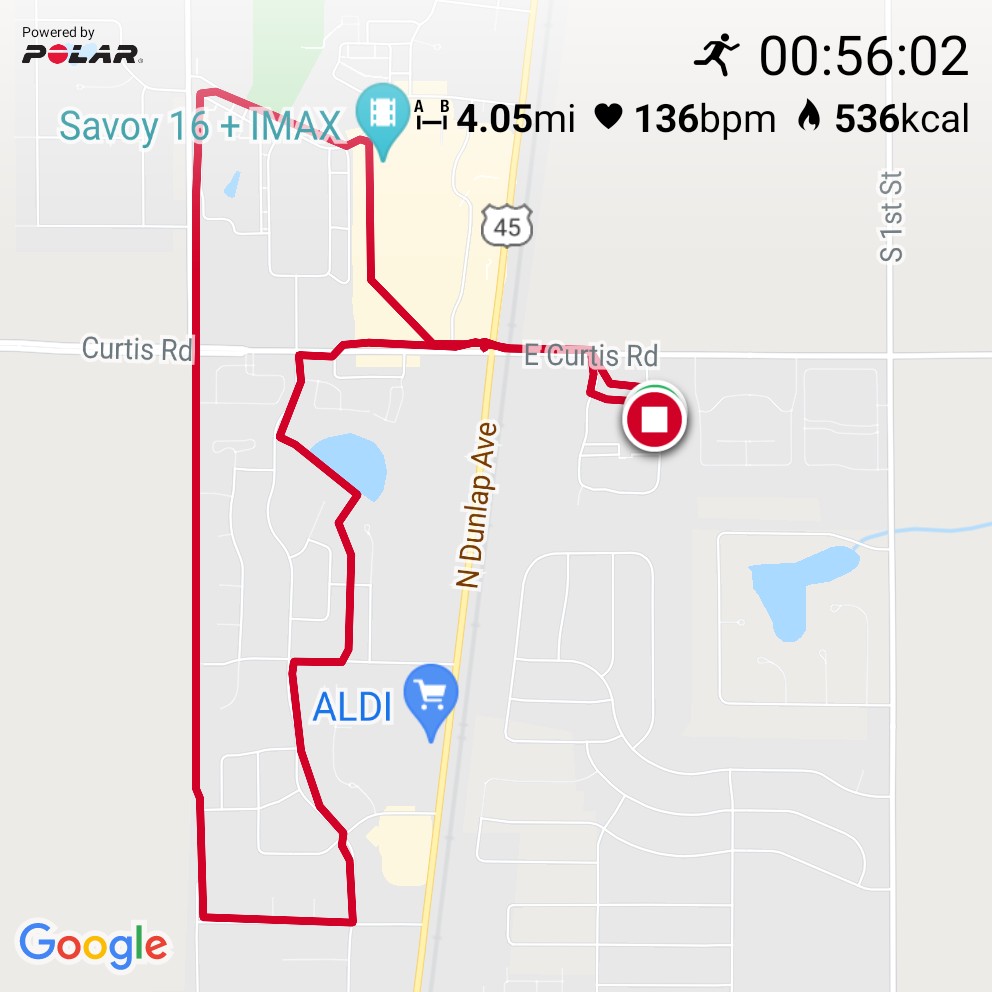
I just wrote a post about “superhero” workouts, mentioning Anthony Arvanitakis’s Superhero Bodyweight Workout which I did last year. I plan to do it again this year, and this post is about a handful of specific issues I had with the plan last year, and how I’m planning to rejigger things to deal with them this year.
There were a few exercises that I couldn’t quite do—not because I lacked strength or endurance, but just because there was a skill component that I couldn’t master quickly enough to go full-power through the 8-week training program. Here are the specific exercises I identified as ones I had trouble with:
Besides those specific exercises, there are two other issues I had trouble with last time:
Last year I started in late May (when Anthony released his latest version for the program and led the program). That was fine, but this year I think I’d like to start earlier in the spring—just as soon as we get reliably nice-enough weather for me to have some confidence I can put my rings up nearly every day.
It’s an eight-week program, so it would be nice to start around the first or second week of April. Then I’ll have my superhero body by the beginning of June.
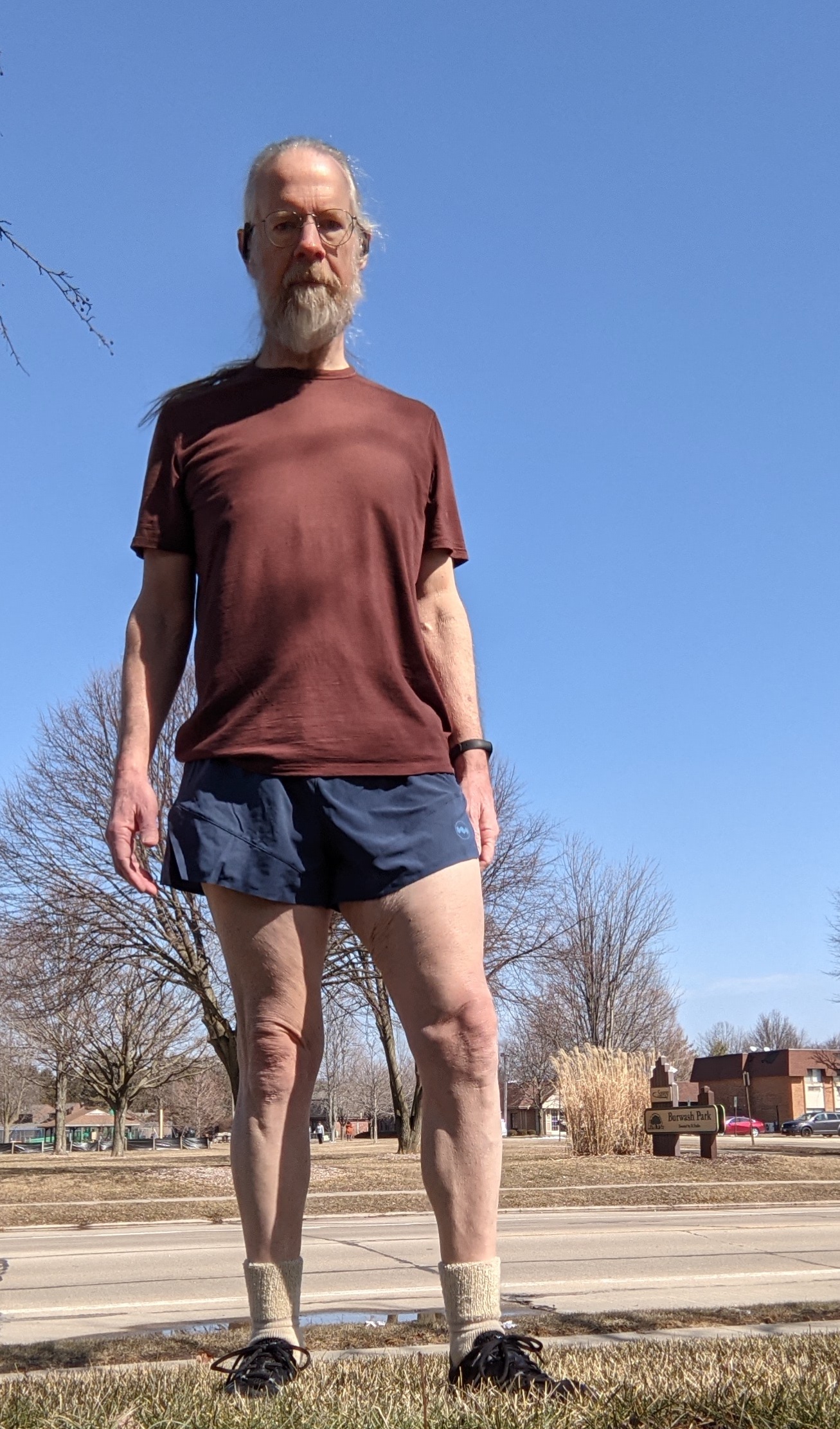
This year was obviously strange in all sorts of ways, so I figure it’s not so strange that my movement practice got strange.

One thing that seems very strange to me is that I reverted to doing a lot of exercise, after having made a big deal the past few years of scorning exercise in favor of movement. I wrote a whole post on this recently (Exercise, movement, training), so I won’t repeat all that stuff here, except to say that the pandemic response provided me with a lot of opportunities to exercise, while restricting my opportunities to move and to train.
Around the beginning of the year I had a realization that what had held me back from achieving my fitness goals was not (as I had been supposing) a lack of intensity, but rather a lack of consistency. I responded by getting very serious of getting my workouts in, and was pretty pleased about having established a proper workout habit when just a few weeks later the pandemic led to our local fitness room being closed. I found this momentarily daunting.
As I’ve mentioned elsewhere, it was around this time I saw this hilarious tweet:
To which my response was “Challenge accepted!”
The biggest problem with losing access to the fitness room was losing access to the pull-up bar. I looked around for alternatives, found that gymnastic rings were available and affordable, and I ordered a pair.
Easily the best purchase I made last year.
The addition of gymnastic rings made for a big change in my exercise regimen. I use them for three exercises: pull ups, inverted rows, and dips. I had worked pretty hard on pull ups before, but upon getting the rings I redoubled my efforts. As far as inverted rows and dips, I had played around with both, but now I got serious.
I round out my upper-body exercises with push ups.
For lower-body exercises I experimented with a variety of possibilities: squats of various types, kettlebell swings, burpees, lunges, etc.
One milestone was achieving my first pull-up. Another was the first time I did two pull-ups. Later I manged (a couple of times) to do three pull-ups!
I just wrote about how kettlebell swings taught me something about the value of doing lots of reps. Based on that, for my indoor workouts (where it’s not handy to set up my rings), I’ve started doing more exercises for high reps. Not enough data yet to know how that’s going to work, but it seems like a valuable experiment.
For a long time—at least many months, maybe more than a year—I’d had a sore foot that got worse when I ran. I repeatedly cut back or eliminated runs, had my foot get better, and then had it start hurting again as soon as I started running again. This past summer I finally took a full month off from running, which seems to have been what my foot needed.
I’ve very gradually resumed running. For some weeks I kept my runs down around just one a week and just 2–2.5 miles. Then up to a 3–3.5 miles. I did one 4 mile run, which didn’t seem to cause any problems, but then I did a run of nearly 5 miles, which did make my foot sore the next day. I took a break until the pain was completely gone and eased back to 3–3.5 miles, and all seems well.
I’ve just started doing two runs per week, a “long” run (slightly over 3 miles) and a “fast” run (where I hold the distance down under 3 miles, but include a few 10-second sprints around the mid-point of the run). That felt really good the last time I did it. (My running gait seems to improve when I run fast.)
I’ve talked at some length about my adventures in getting a kettlebell during a pandemic, and about my experience with kettlebell swings producing unexpected hypertrophy, so I won’t repeat that here. I’ll just say that cold weather—and especially ice on the patio—have kept me from doing much kettlebell swinging in the second half of December. But literally every day I look out on the patio to see if it is clear of ice, and get out and do some swinging when it seems safe.
I added a jump rope to my exercise equipment a while ago, and back in March and April did enough rope skipping to recover the ability to do it. (That is, I could jump rope for 30 or 40 seconds with zero or one misses.) The problem was that jumping rope hurt my sore foot just like running did. I prefer running, so when I had to set limits on those exercises to protect my feet, I ended up mostly running, as long as the weather was nice.
As the weather turned chilly in the fall, and especially when we started having days when there was an occasional short period adequate weather, but not the sort of reliable block of nice weather that makes me think I can fit in a good long run, I started thinking that an occasional bout of jumping rope might be a great way to squeeze in a quick, intense workout during even quite a brief period of nice weather on an otherwise nasty day.
To make full use of such periods, I paid up for a weighted jump rope. I have to say I’m pretty happy with it. It’s very much the opposite of my old jump rope, which was just a plastic-coated wire—very light and very fast—marketed to martial artists and cross-fit types. Pretty good for getting lighter on your feet, and adequate for a lower-body workout, but not much for the upper body. The weighted jump rope (even the lightest one, at just ¼ lb) definitely turns the jump rope exercise into an upper-body exercise as well.
I haven’t had the weighted jump rope long enough to form a definite opinion about it, but after just a couple of sessions, I’m pretty pleased, and if the weather cooperates, I’m hoping to get multiple HIIT jump rope workouts in over the course of the winter.
My main non-exercise movement is and always has been walking, but I’ve done very little this past year. This was half due to the pandemic, and half due to Jackie having a sore hip that makes it hard for her to walk fast or for long distances. (I’ve been taking Jackie to physical therapy, and she’s getting better. We’ve been doing walks in the woods south of the Arboretum, and that’s going very well.)
With fewer and shorter walks with Jackie, and with walking for transportation almost eliminated by the pandemic, my non-exercise walking has dwindled pretty severely.
Ditto for my non-exercise running.
I have very much had my eye on parkour as the thing I want to get back to this summer. Since I have made great progress on strength training specifically with an eye toward parkour, I’m very hopeful.
I’ve been doing just a bit of training, even without being able to get together with other traceurs.
The most active member of the campus parkour group turns out to have moved to Colorado. I’ve been in touch with him, and he seems to mean to spend at least some time here this summer, so hopefully I can put together some sort of training with him. In the meantime, I ordered one of his t-shirts, so I’ll have something to wear.
Like everything else, the taiji classes I used to teach at the Savoy Rec Center had to be abruptly canceled back in March.
During the spring I led a few group practice sessions via Zoom. They’re better than nothing, and at least keep the group connected.
Once the lock-down restrictions in Illinois eased up a bit in April, my group started meeting in the park, and we continued to meet through the summer. Once the weather turned, I resumed the on-line practice sessions.
Unlike a lot of my students, who don’t feel like they can do the taiji practice without someone to lead them, I can actually do a full practice session entirely on my own. And I occasionally do. But without the group being there, it’s hard to get motivated.
Still, I almost always include some qigong as part of my morning exercises, do the once-a-week group practice session, and occasionally do the full 48-movement form (if only to make sure I don’t forget how to do it).
Looking ahead, of course, is all about the end to the pandemic, something that I have high hopes for. If I can get vaccinated by June, let’s say, then by July maybe I can resume normal activity (while wearing a mask and maintaining social distance, of course, but actually interacting with people other than just Jackie).
Normal would include hiking in the woods, and maybe visiting some natural areas within a few hours drive. (We’ve pretty much completely avoided going anywhere so far that we couldn’t go, hike, and return without having to use a restroom.)
Normal would include practicing parkour with the campus group.
Normal would include resuming teaching taiji in the fall.
I had scheduled a visit to Urbana Boulders to do some wall climbing right when the lockdown started, so that fell by the wayside. I had actually started taking an aikido class when we had to stop because of the pandemic. Either one of those things might happen, once the pandemic ends.
Basically, I have high hopes for 2021.

I did an experiment a couple of days ago: I tested a combined workout that doubled up two pairs of exercises that I’d been doing separately. Up to now I’ve been doing four sessions each week: two where I do pull ups & pushups, and then two where I do dips & inverted rows. (Together with a leg exercise and a core exercise each workout.)
That was working very well, but it meant 4 upper-body strength sessions each week, which is a lot. Throw in a couple of lower-body strength sessions as well (such as hill sprints or kettlebell swings), plus a rest day, and I didn’t have a day to do anything else. This sort of volume has been well for me so far, but I think I may have reached a limit, and would benefit from a cycle of deeper recovery than just a week of lighter workouts: Except for “de-load” weeks in mid-March and mid-June, I’ve been averaging close to 5 workouts a week since the end of January. I’m thinking I want to take it down a notch.
With that in mind, I’ve been thinking about how I want to structure my training through the fall and winter. One obvious change was to go from four days of upper-body strength training per week to just three. The problem was that I didn’t see an easy way to evenly cover the range of pushing and pulling exercises at a reasonable volume with just three workouts a week, except by doing both pairs in each workout.
Hence my experiment, in which I did just that.
It was not a complete success. I managed to crank my way through the workout, but it was very long and tough. I don’t think I could keep it up three times a week for months.
Happily, while describing my difficulties to my friend Chuck, I had a brainstorm: I could do threes workouts per week—two of them just like what I’ve been doing (one with pull-ups & push-ups, and then another with inverted rows & dips), and then do just one combined workout. That keeps my workouts even, as far as covering all four exercises twice each week, without being quite so overwhelming as trying to do the combined workout three times a week.
With just three upper-body strength workouts per week, I have four days for other stuff, and I can mix and match as I choose. I can do the hill sprints that Anthony Arvanitakis recommends, or I can do kettlebell swings. (Either of those makes a good HIIT workout.) I can go for a run. I can go for a hike. I can do my animal moves. In particular, I can do two rest days, if that seems like a good idea. (Which I think it probably does. At least my Oura ring thinks so.)
This all got started back in February, when I figured out that I was lacking in consistency. (Previously I’d imagined that the problem was a lack of intensity.) Targeting 5 workouts a week has meant that, even when I miss one, I get in more than when I was targeting 3 workouts a week—even if I didn‘t miss one.
I don’t want to give up the consistency, I just want to take the volume down a notch. Hence the struggle. But I think now I’ve got a plan.
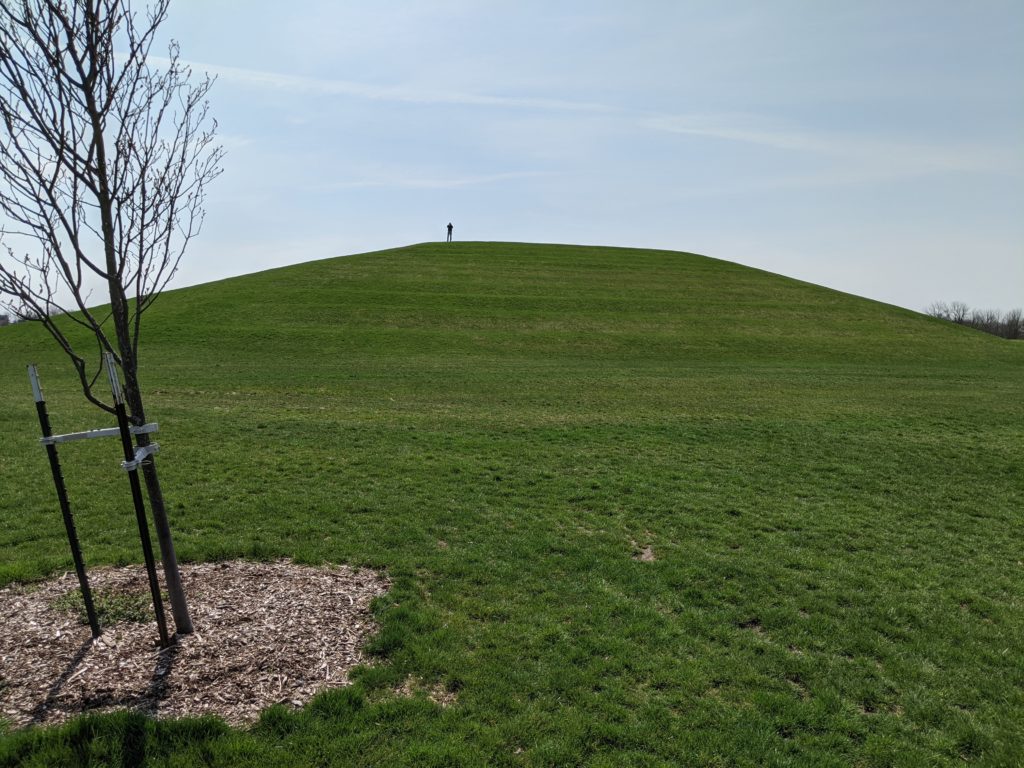
Since spring I’ve been using some workout plans put together by Anthony Arvanitakis. For eight weeks from late May to early July I did his Superhero Bodyweight Workout, and since then I’ve been following along with bodyweight workouts he’s been sharing for the summer.
One limitation that I’ve had all this time is that I haven’t been able to do the hill or stair sprint workouts that he suggests, due to a lingering foot injury. After repeatedly resting my sore foot until it was nearly all better, and then trying to get back into running, only to have my foot start hurting again, I finally took a full month off. That was enough for my foot to finally feel entirely better, so last week I went for a 3-mile run as a test. My foot didn’t hurt during the run, but was sore again that evening and the next day.
I took another week off from running, and then today decided to try a different tack: Those hill-sprint workouts.
Three things about this make it make sense to me:
Putting those things together makes me think that maybe hill sprints will let me run at least a little without aggravating my foot injury.
Another thing I’m doing is extending my warmup quite a bit. I did my full dynamic stretching routine before heading to the workout location. Once I got there I scrupulously followed the prescribed warmup routine, jogging up the hill at 50%, 60%, 70% and 80% intensity (I actually did 5 preliminary jogs up the hill, at gradually increasing intensity). After each of the last two warmup jogs I did a set of 12 straight-elbow push ups (what I call rhomboid pushups) as preparation for the pushup part of the workout.
The main workout then was 4 sets of sprinting up the hill at 90% intensity, walking down, and then doing as many pushups as I could do with perfect form (I did 10, 10, 8 and 8 pushups).
I also did something I’ve always resisted in the past: I drove to my hill. (This being central Illinois, hills are few and far between. My hill is at Colbert Park.) Usually I don’t like to drive somewhere to get exercise—why not walk or run and thereby get more exercise? But with my sore foot, that much extra running would definitely aggravate the injury. Even walking that far might be an issue.
One thing I need to be careful of is to be sure to get in my full wrist warmup. I’m pretty good about that ahead of a rings workout, but perhaps wasn’t as scrupulous as I should have been this time. But the pushups put enough stress on the wrists that it’s good to get them fully warmed up even before the rhomboid pushups.
I’m pretty pleased with my workout. My foot (really my ankle) is a bit tender this evening. We’ll see how it feels tomorrow. On the schedule I’m (tentatively) following, I’ll be doing hill sprints again Monday. If my foot is completely pain-free at least several days ahead of that, I’ll proceed with that plan.
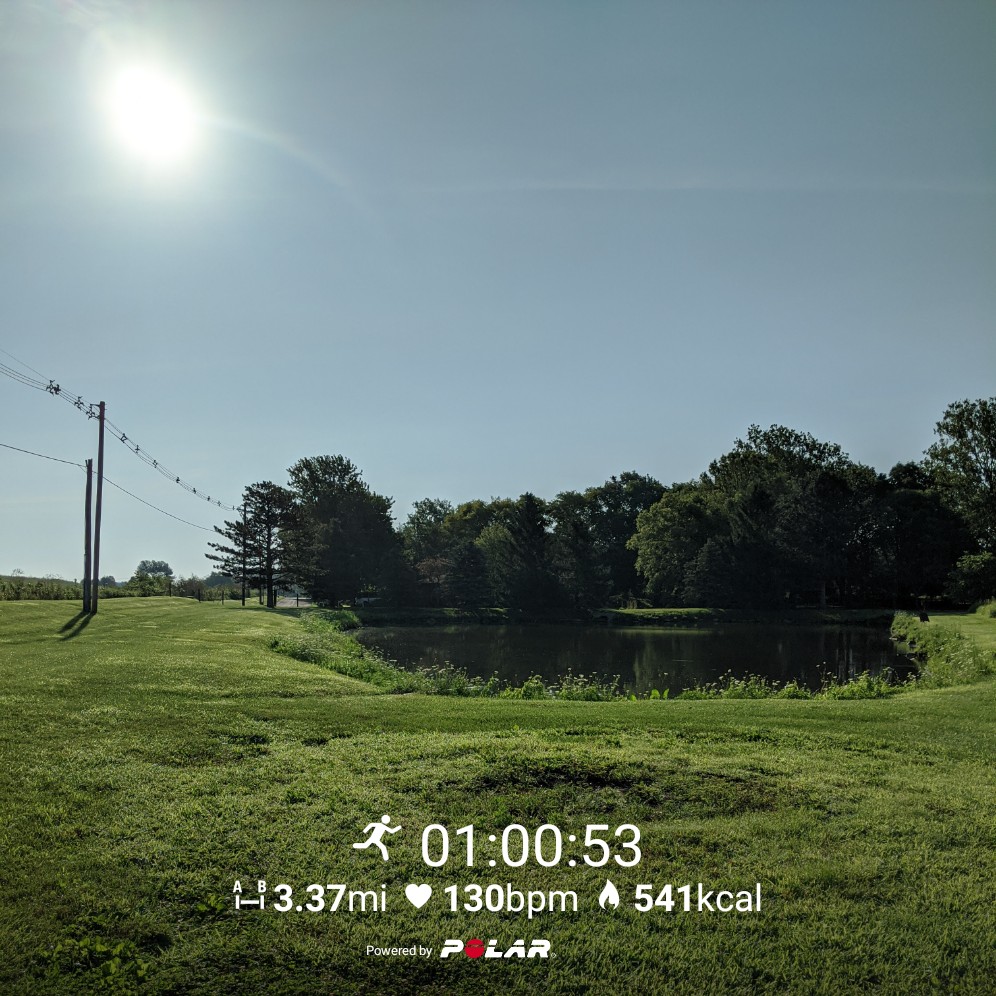
My Oura ring produces a “readiness” score each day, and I’ve found it to be a pretty good indication as to whether or not I’m up for a long run or a hard workout. The times I’ve ignored it when it said I needed to take it easy, I’ve often found it was right and I was wrong. Today was a rare instance of the reverse.
According to my plan, today should have been a rest day. But I wanted to go for a run.
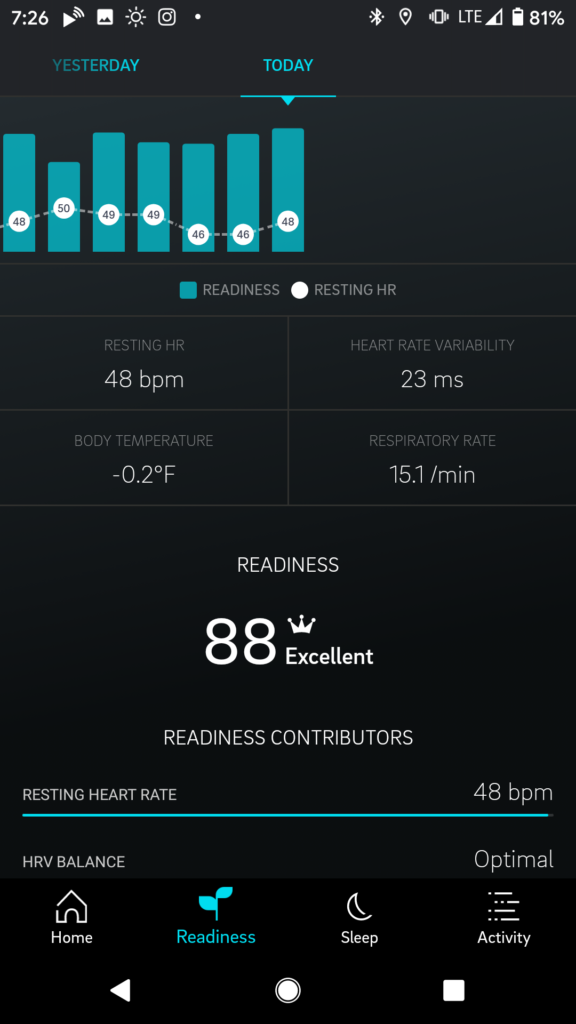
The ring gave me a readiness score of 88 (out of a possible 100), which is rather above my average (my average this month has been 80), and I took that as a license to go for the run I wanted, instead of taking the rest day my plan suggested.
Turns out—this time—my plan was right and my ring was wrong. I went for my run, but I felt tired and sluggish throughout.
It wasn’t a catastrophe. I didn’t hurt myself. I just don’t think I did myself much good. I ran to Colbert Park, did three hill sprints (in actuality, feeble jogs), and then ran home again. But I didn’t have any oomph behind the sprints, so I don’t expect they’ll have done their job in terms of boosting leg strength or aerobic capacity.
The Oura ring’s readiness score has been a very reliable indicator for me—which is why it helped me fool myself this time. So this is a good reminder to me to interrogate all of the factors that go into making a workout decision—my plan, my intuition, my ring, etc.
So one thing I’m doing is looking back at the factors that feed into the score, looking to see if there’s one that looked better than it really was.
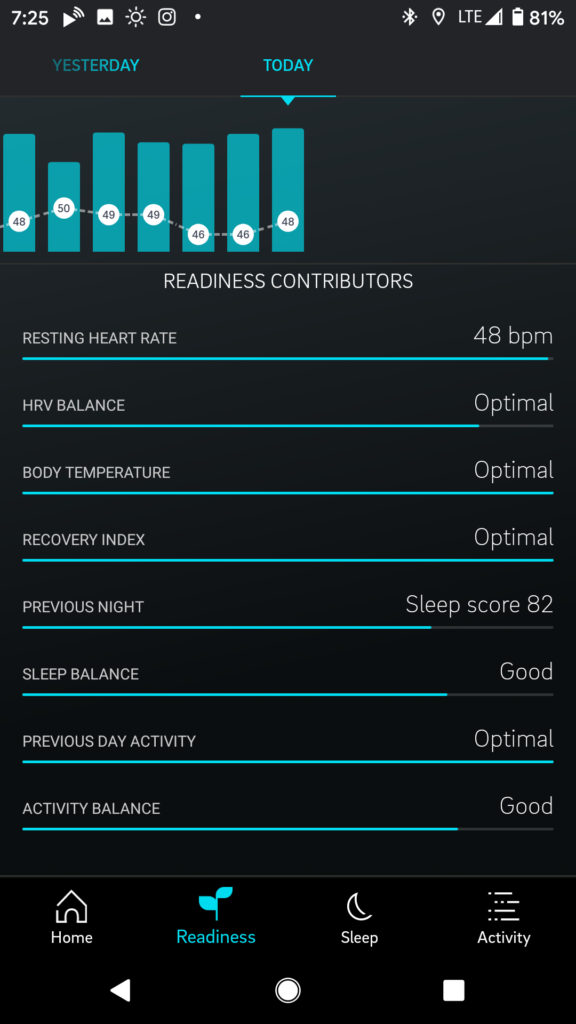
Nothing really jumps out at me. Given the same information, I’d also figure that I was ready for a hard workout. (In fact, I had that information, plus my own sense that I felt ready for a hard workout. That’s exactly how I overrode my plan and went out for a tired, tiresome run.)
Oh, well. Insert your own pithy “live and learn” aphorism here.